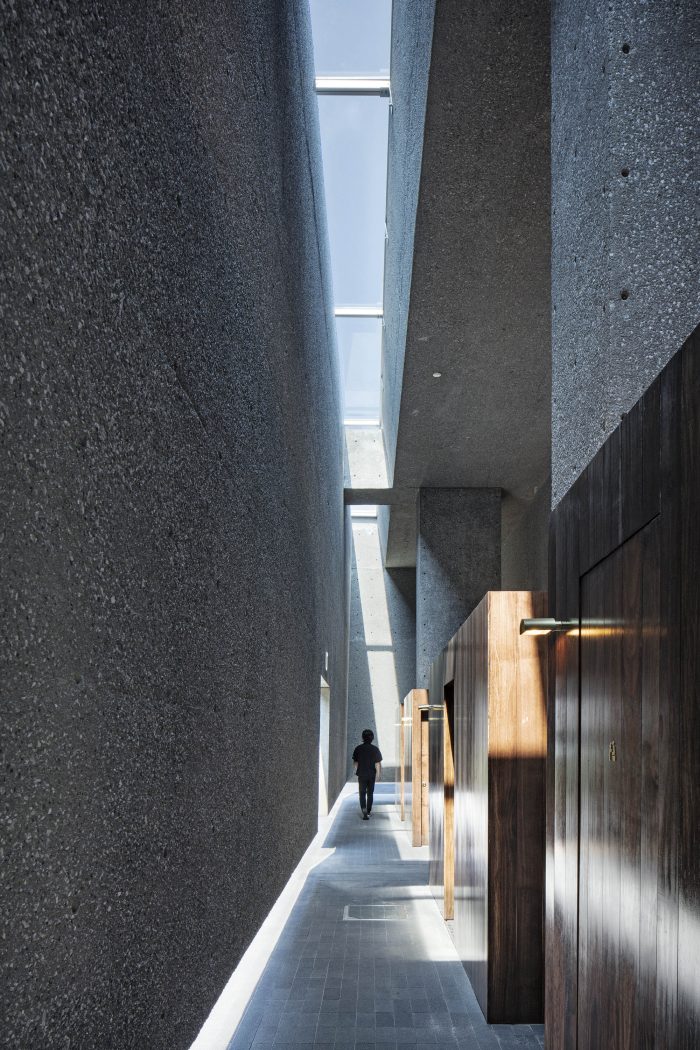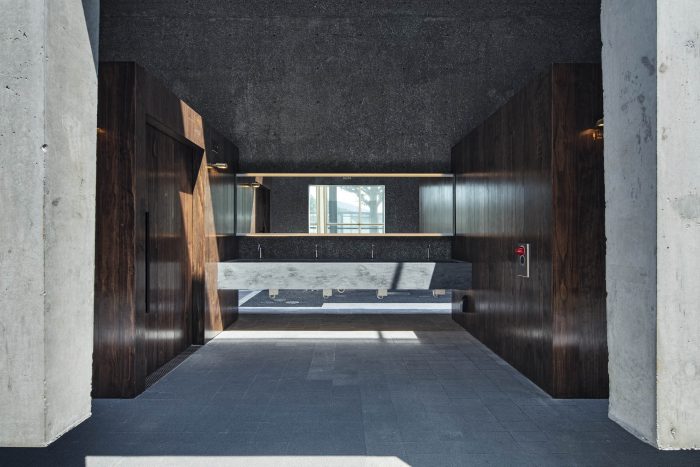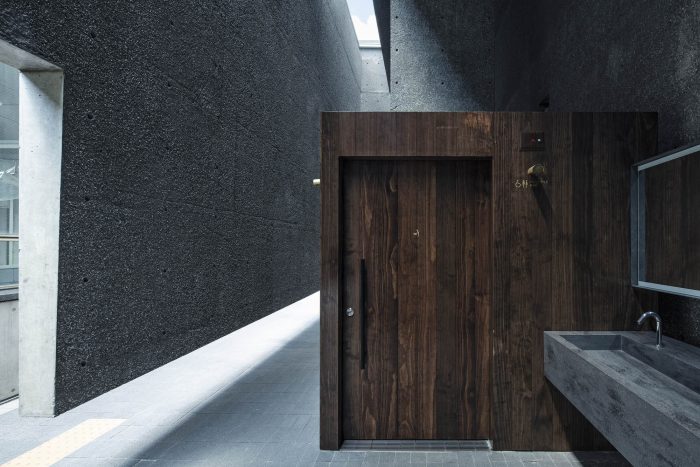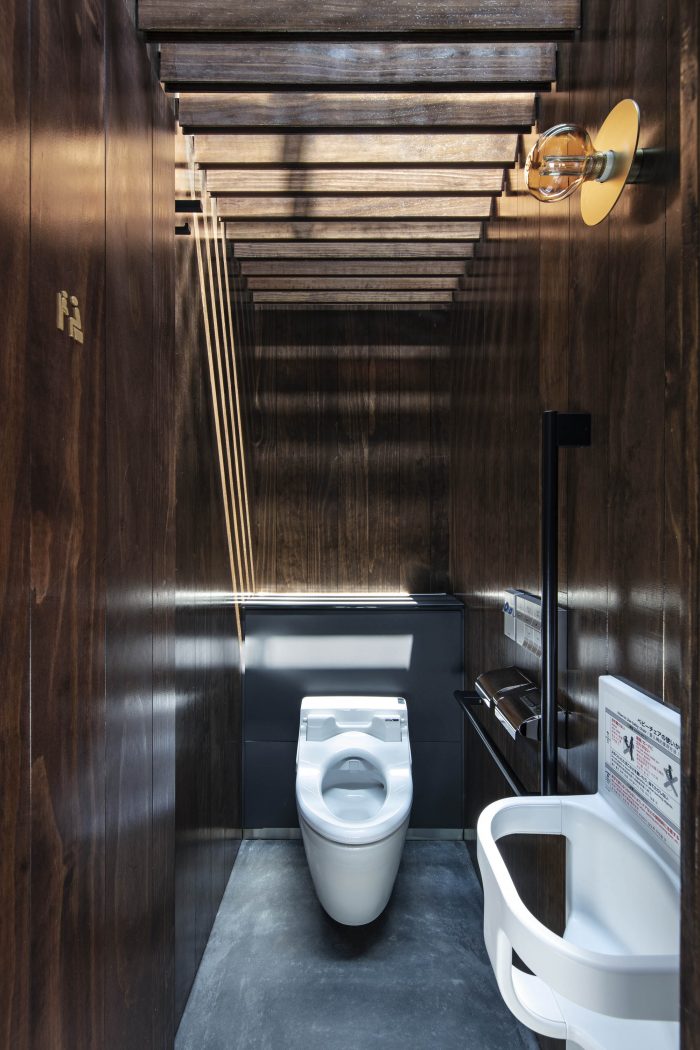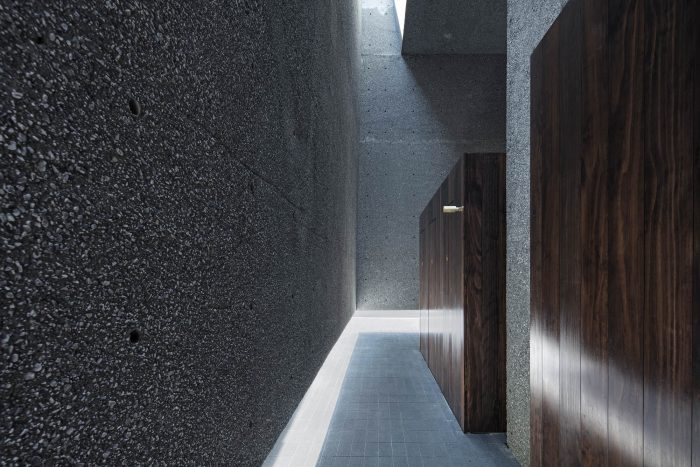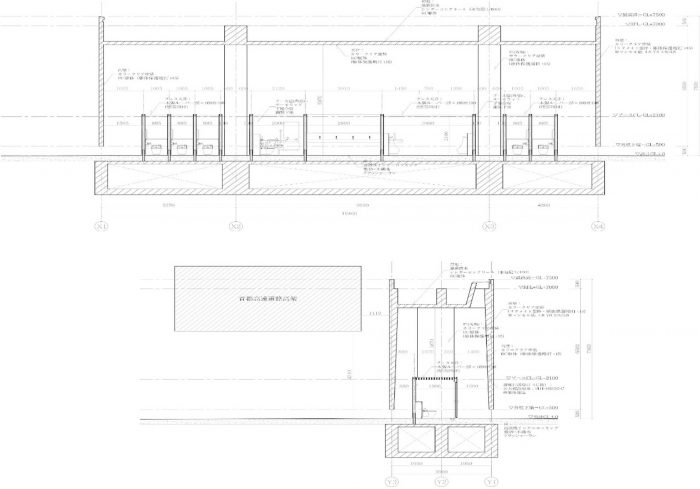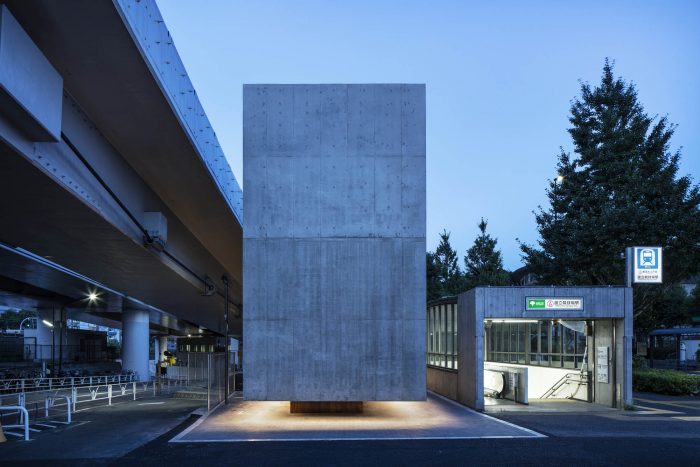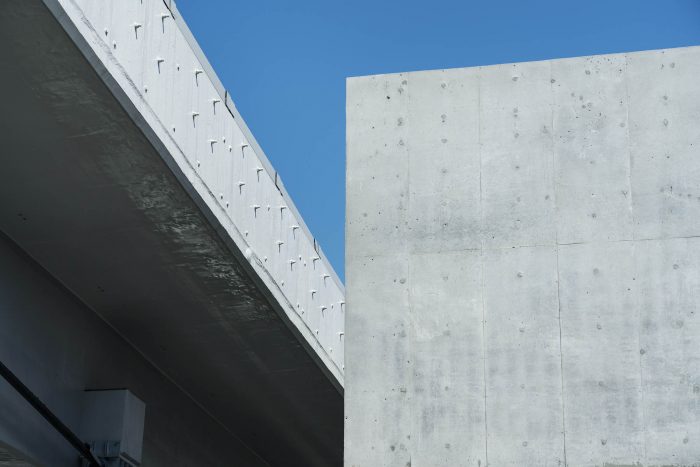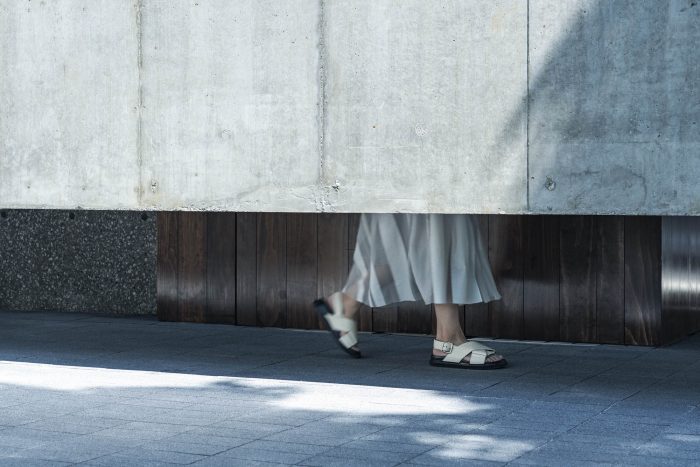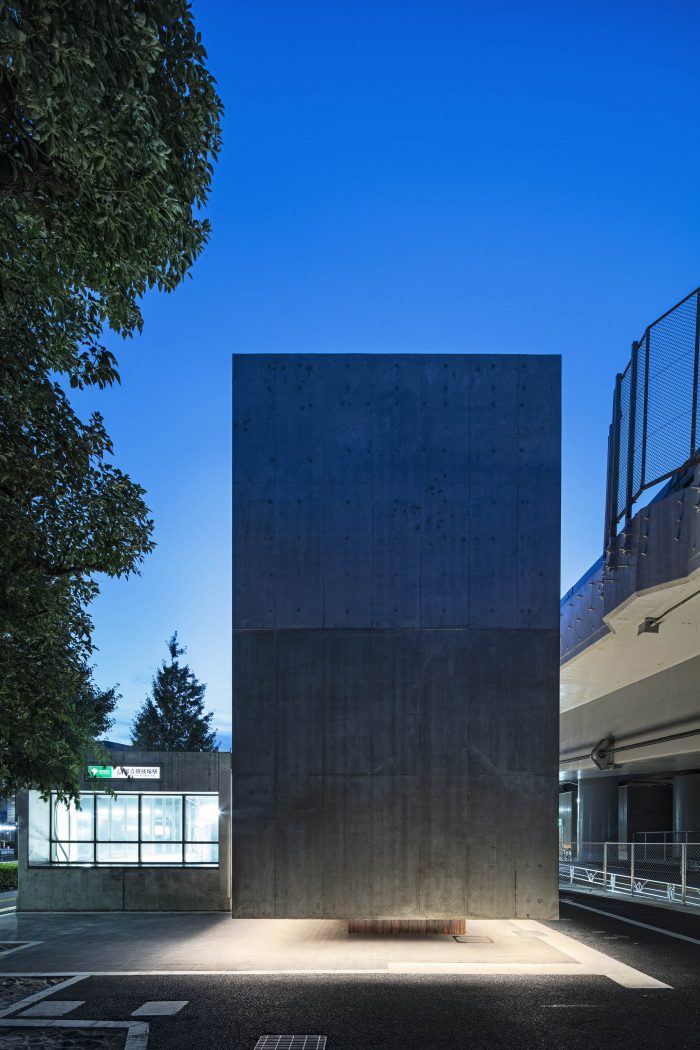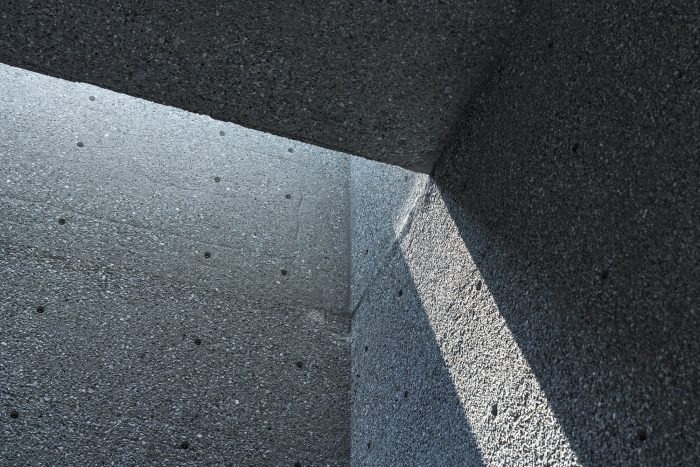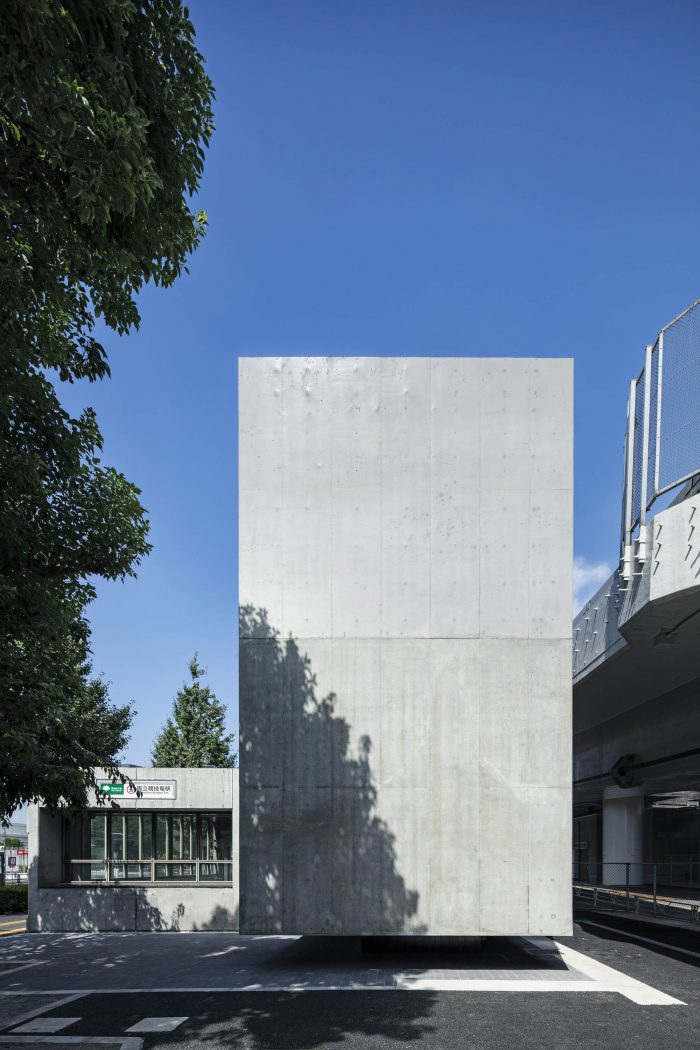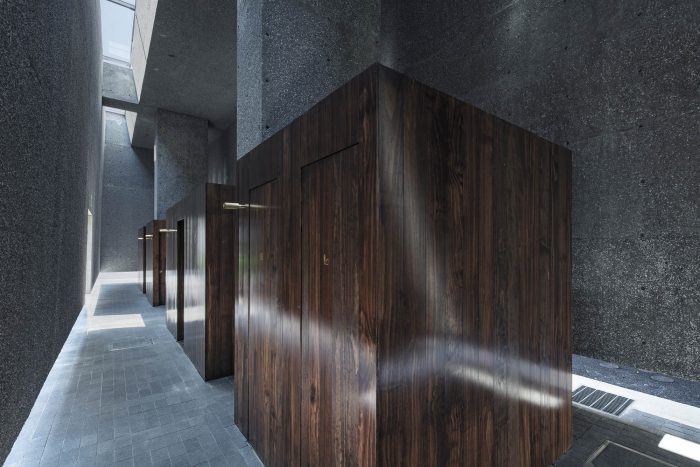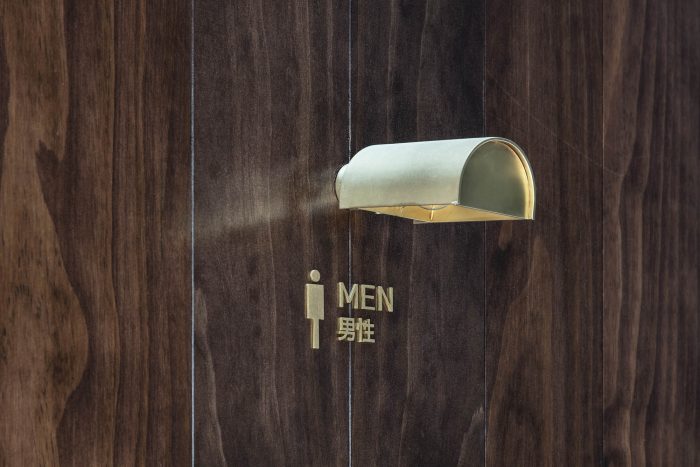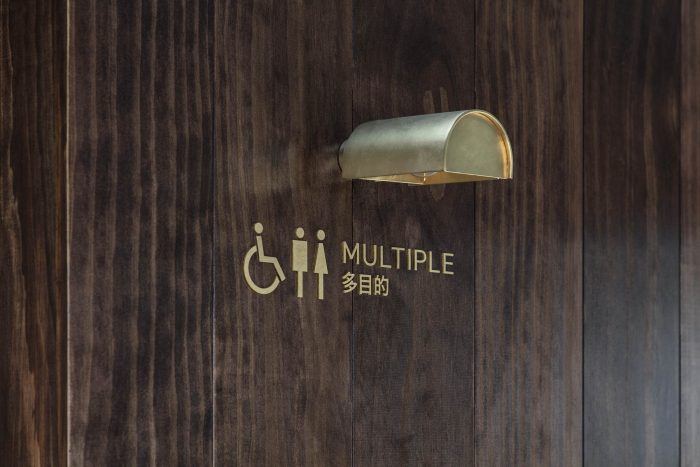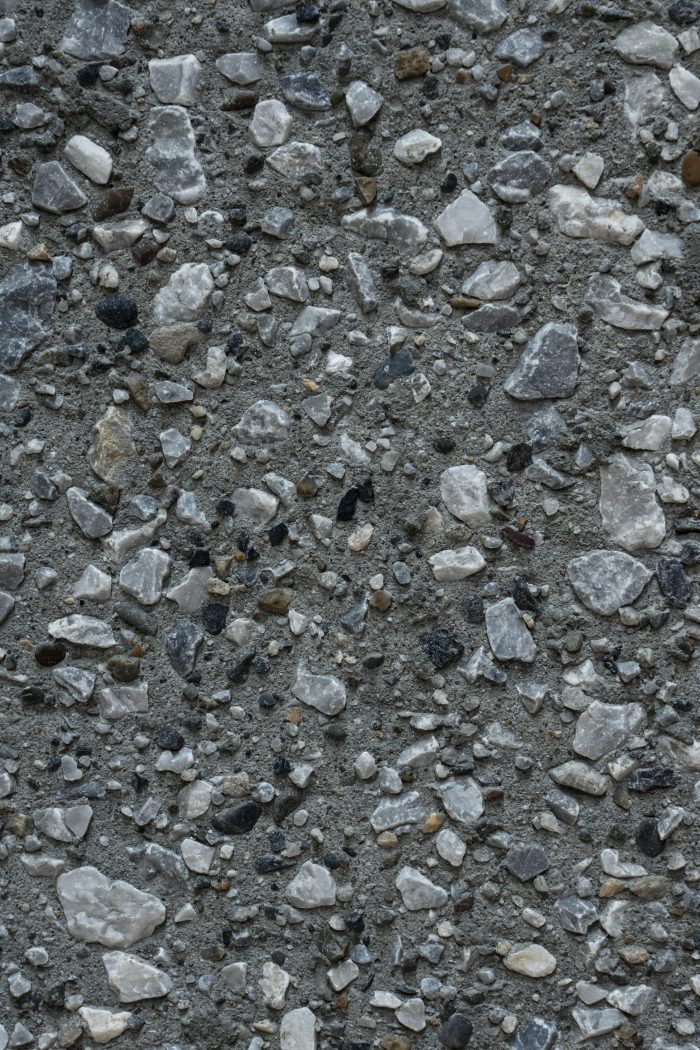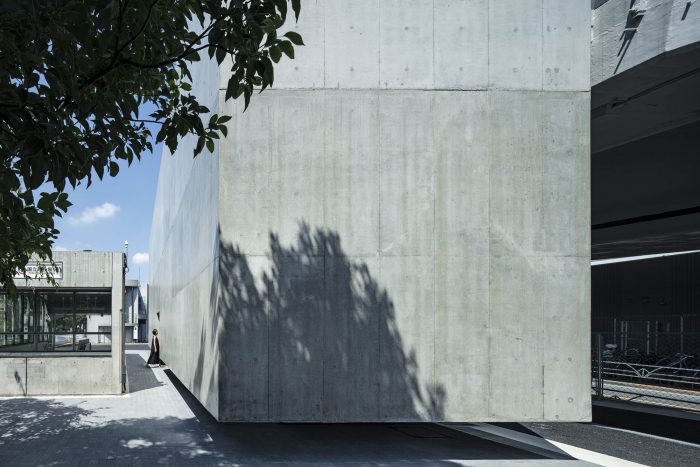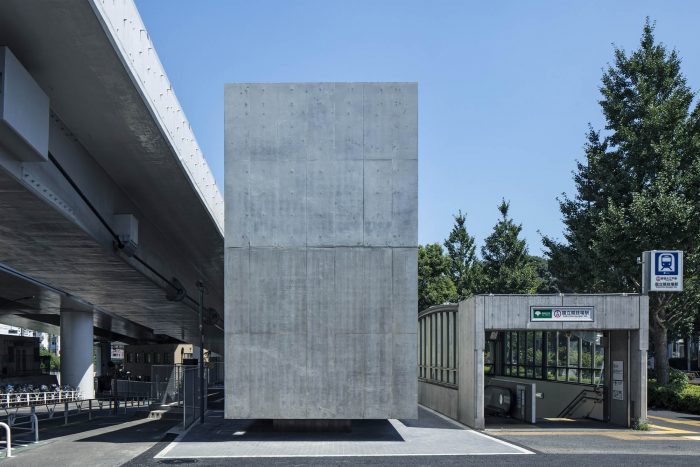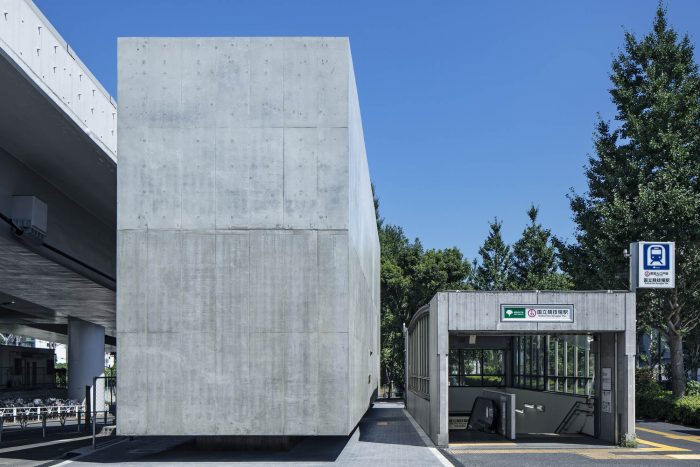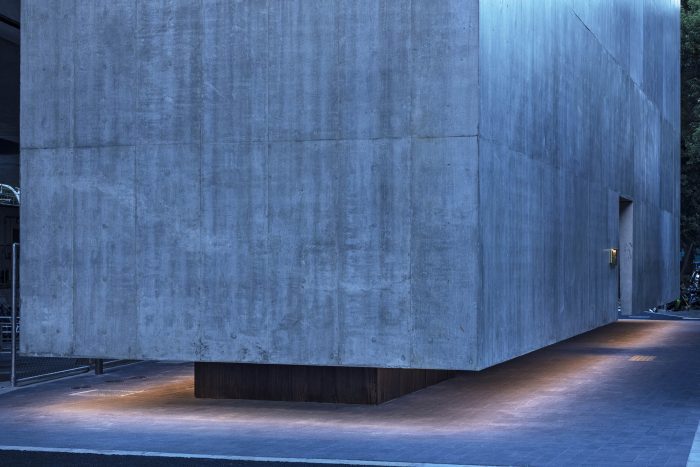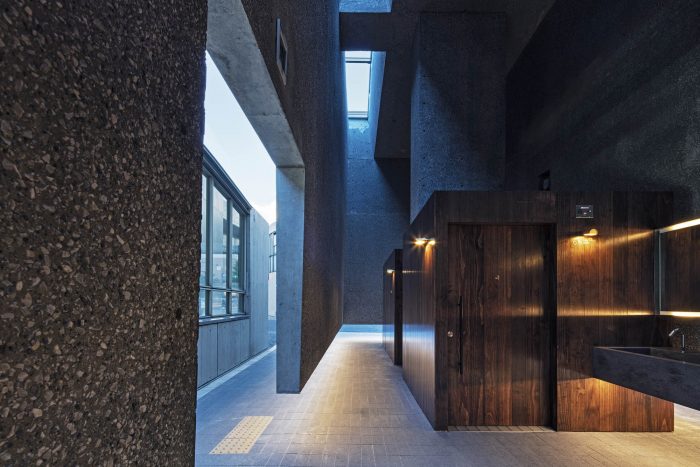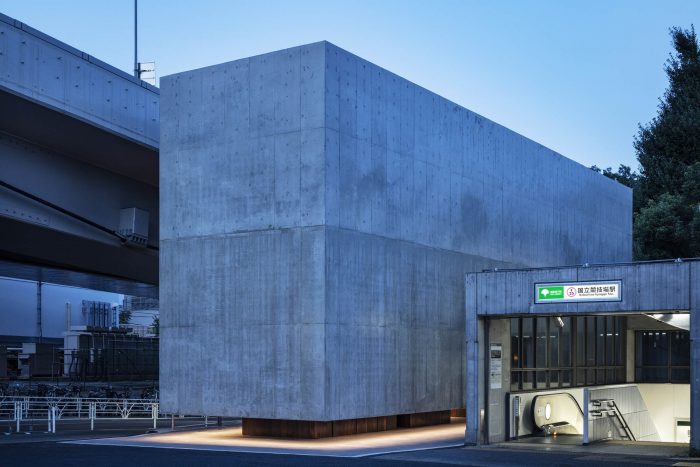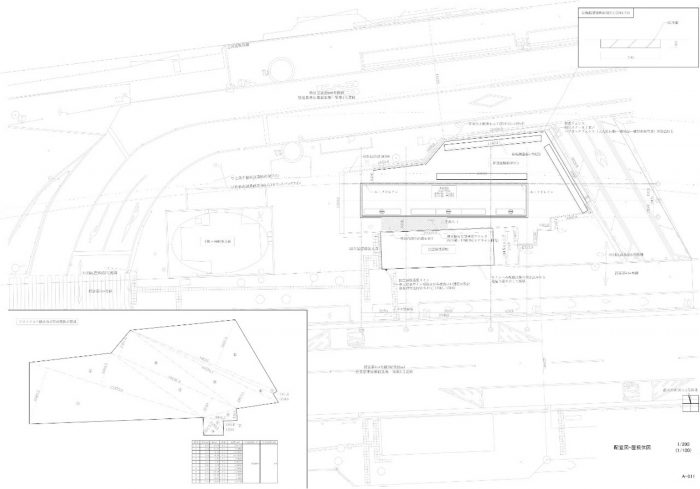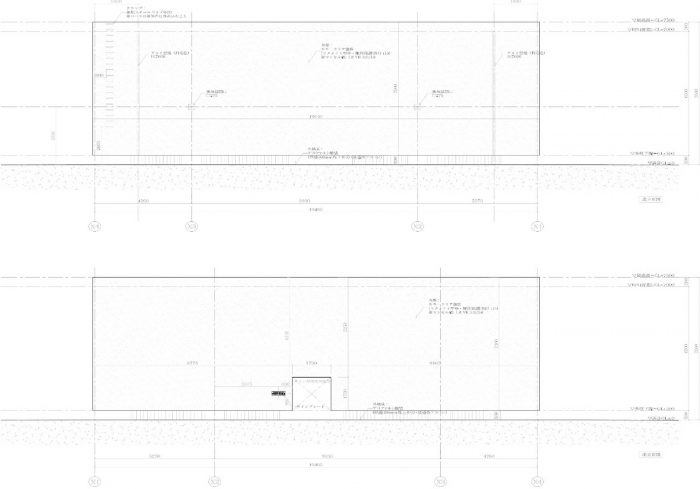该建筑位于首都高速路高架和地铁国家体育场站之间,设计为奥运会期间国内外各种游客使用的具有文化性的公共空间,同时也是未来城市的基础设施。我们从传统的 “公厕 “的印象、功能和用途等前提出发,重新考虑项目。
This building, located between the elevated Metropolitan Expressway and the National Stadium subway station, was designed to be a public space with a cultural aspect that will be used by a variety of visitors from Japan and abroad on the occasion of the Olympics, as well as to serve as an infrastructure for the city in the future. We started the project by reconsidering the impression, function and usage of the conventional “public toilet” from the premise.
在没有平面的情况下,我们在高度方向上确保了一个大的空气空间,将两根柱子、厕所间和洗手设施集中在中央,并将四面外墙高出地面500mm。
In the absence of a planar expanse, we secured a large air space in the height direction, concentrated two pillars, toilet booths, and hand-washing facilities in the center, and raised the four exterior walls 500mm above the ground.
通过墙体的浮动,我们在建筑内部与城市之间建立了良好的联系,也让我们感受到了人的存在的透明性,我们摆脱了走廊和死角,导致公共厕所的停滞感和不安感。
By floating the walls, we were able to create a good connection between the interior of the building and the city, as well as a transparency that allows us to feel the presence of people, and we were able to get rid of the corridors and dead ends that lead to a sense of stagnation and uneasiness in public restrooms.
7.5米高的立方体内墙采用了水洗混凝土的质感,从屋顶的缝隙中透出的柔和光线将光线引入室内,令人印象深刻。在这个空间里,人们可以欣赏到我们日常意识之外的 “大自然编织的季节和时间的变化”,而不打算通过改变光线来实现。
The interior walls of the 7.5 m high cube are finished with a texture of washed concrete, and the soft light coming through the slits in the roof draws the light into the interior in an impressive way. It is a space where one can appreciate the “changes of seasons and time woven by nature,” which are outside of our daily awareness, without intending to do so by changing the light.
与传统印象中的公共厕所相悖的规格,如Akoya木板、铜牌的酒店式外观、洗脸盆放在中央让男女共享等,这些都是强调合理性和多样性的规划。我们希望通过为大家创造一个扁平化、使用方便、高品质的空间,改变使用者的意识,让他们自己也参与到维护舒适环境的行列中来,从而实现良性循环。
The specifications that contradict the conventional perception of public toilets, such as the Akoya wood paneling, the hotel-like appearance of the brass signage, and the washbasin placed in the center so that men and women can share, were planned with an emphasis on rationality and diversity. By creating a space that is flat, easy to use, and of high quality for everyone, we hope to change the consciousness of the users, and that they themselves will participate in maintaining a comfortable environment, leading to a healthy cycle.
通过精心构建 “因沉重而有浮动感”、”因黑暗而有光亮感 “等矛盾关系,我试图消解城市与建筑之间的界限,营造自然与建筑共鸣的魅力边界。
By carefully building up the relationship between the contradictions, such as “a sense of floating due to heaviness” and “the presence of light due to darkness”, I sought to dissolve the boundary between the city and the architecture, and to create an attractive boundary where nature and architecture resonate with each other.
建筑的空白空间被留作艺术的场所,作为一个成熟城市的公共建筑,它不仅具有 “服务 “城市的功能,还提供了另一种意义上的城市漫步享受。
The blank space in the building is left as a place for art, and as a public building in a mature city, it not only serves the function of “serving” the city, but also provides another meaning of enjoyment of walking around the city.
建筑师:Suppose Design Office
年份:2020年
摄影:Kenta Hasegawa
制造商:AutoDesk, Sanko, Trimble Navigation, V-Ray, Woodwise
客户:Shibuya City
主设计师:Makoto Tanijiri, Yuji Okanishi, Ai Yoshida
设计团队:OHNO-Japan, Zo Consulting Engineers
工程建设:Shin
城市:Shibuya City
国家:日本
Architects: Suppose Design Office
Year: 2020
Photographs: Kenta Hasegawa
Manufacturers: AutoDesk, Sanko, Trimble Navigation, V-Ray, Woodwise
Clients :Shibuya City
Lead Architect:Makoto Tanijiri, Yuji Okanishi, Ai Yoshida
Design Team:OHNO-Japan, Zo Consulting Engineers
Engineering And Construction:Shin
City:Shibuya City
Country:Japan




